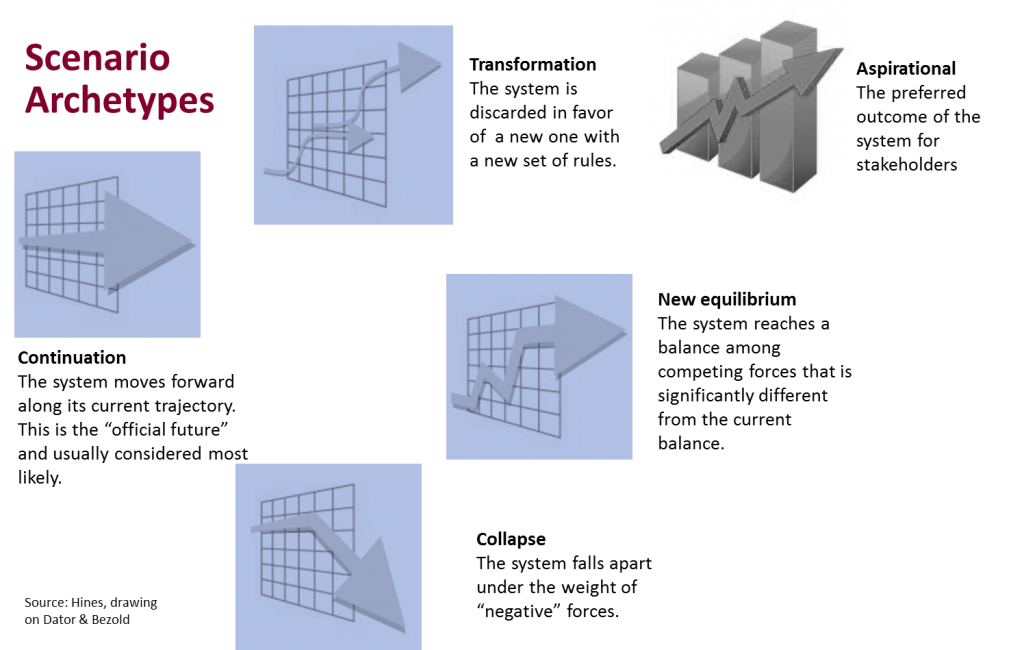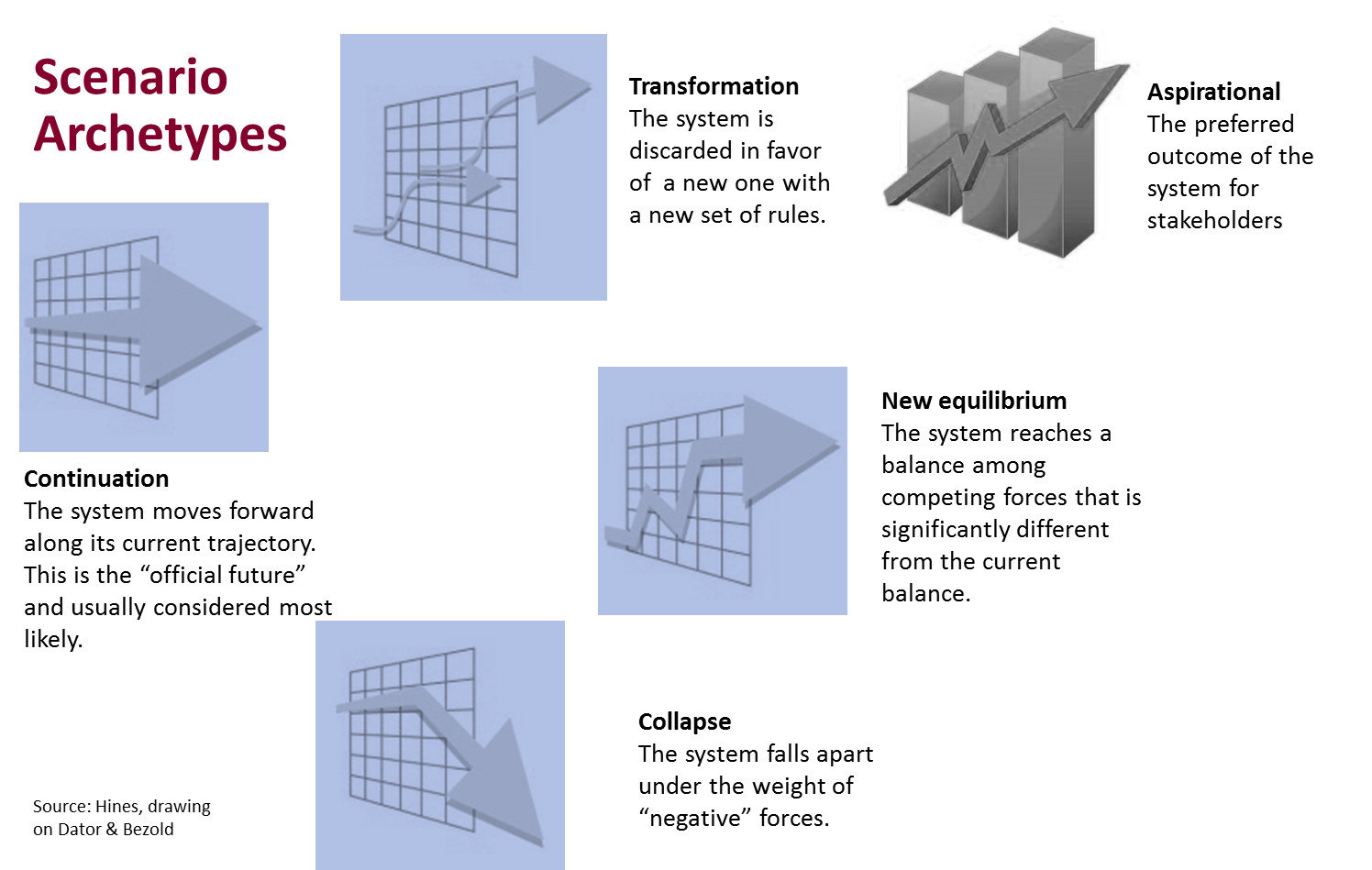 I’ve written previously about the scenario archetype technique. A few years ago, In World Futures class, we started doing small group projects in which teams of students are assigned an archetype at the beginning of the semester and as we go through the various aspects of World Futures, they craft a story of the future according to their archetype. We don’t do the baseline (continuation), so that leaves three: collapse, new equilibrium, and transformation. A bigger class size this semester created a challenge for the “right” size of the teams, but gave me an idea for adding an archetype to the mix: aspirational. That shouldn’t have been too difficult, as I nominated Clem Bezold’s aticle on IAF’s Aspirational Futures approach for an APF Most Significant Futures Work Award back in 2014. Clem and IAF have long done pioneering work in the “visioning” space and this article captures the essence of the approach they have developed for combining scenarios and visioning. Their approach is an interesting one, however, we are borrowing a piece from it and plugging it into our archetype approach. See the original article published in May 2009 for a description of their Aspirational Futures approach.
I’ve written previously about the scenario archetype technique. A few years ago, In World Futures class, we started doing small group projects in which teams of students are assigned an archetype at the beginning of the semester and as we go through the various aspects of World Futures, they craft a story of the future according to their archetype. We don’t do the baseline (continuation), so that leaves three: collapse, new equilibrium, and transformation. A bigger class size this semester created a challenge for the “right” size of the teams, but gave me an idea for adding an archetype to the mix: aspirational. That shouldn’t have been too difficult, as I nominated Clem Bezold’s aticle on IAF’s Aspirational Futures approach for an APF Most Significant Futures Work Award back in 2014. Clem and IAF have long done pioneering work in the “visioning” space and this article captures the essence of the approach they have developed for combining scenarios and visioning. Their approach is an interesting one, however, we are borrowing a piece from it and plugging it into our archetype approach. See the original article published in May 2009 for a description of their Aspirational Futures approach.
So this semester we have a team trying out the aspirational archetype. We could call it the preferred future or the visionary archetype. As described by Bezold, key stakeholders pursuing visionary strategies form a critical mass. The scenario charts the path and outcome. Think of it in terms of “what success looks like.” For my student team, this requires that they develop a consensus on what this aspirational/preferred/visionary approach is. It could be more challenging for them in that they are spread out across the country in different situations and organizations. They are not part of the same organization that [hopefully] has developed some sense of where it wants to go.
The way we do the approach in class is that each week we cover a different sector, e.g., demography, politics, economy, etc. and we agree on what appear to be the key building blocks (or drivers) for that topic, and then each team “translates” the building block according to the archetype. It’s a bit more straightforward for collapse, new equilibrium, and transformation. In the aspirational archetype, the team has to agree on what it considers to be the preferred outcome. It will be interesting to see how this plays out. Andy Hines

Hi Andy;
I have often used an exercise of creating preferred futures with my client teams and found it very successful. It gets people forward thinking, out of a negative, powerless, the glass is half empty headspace. I started using this years ago after a project in which I had brought together several expert thought leaders to participate in a strategic visioning program for a client and had set up an exercise asking teams (thought leaders and clients) to create visions of the future. Each team’s report out was so negative (which was a shock because there was nothing in particular about the makeup of the team or the client’s business that would have lead me to expect this would happen). We were feeling stressed and incapacitated. By providing an opportunity to create Preferred Futures, and then discussing the merits and what would have to be done to realize them, the energy immediately changed, we were able to harness our creative thinking to identify strong, viable new paths for our client to move forward.